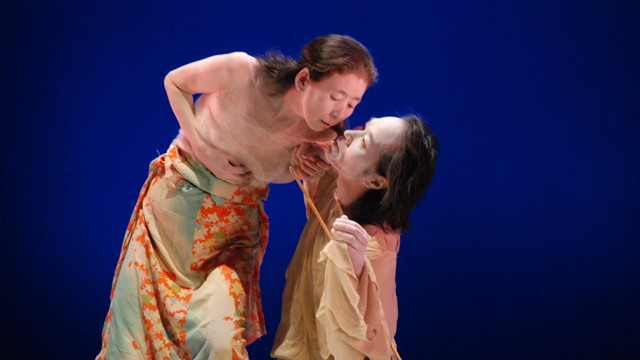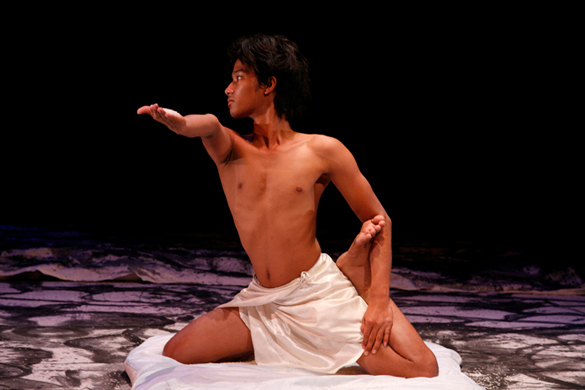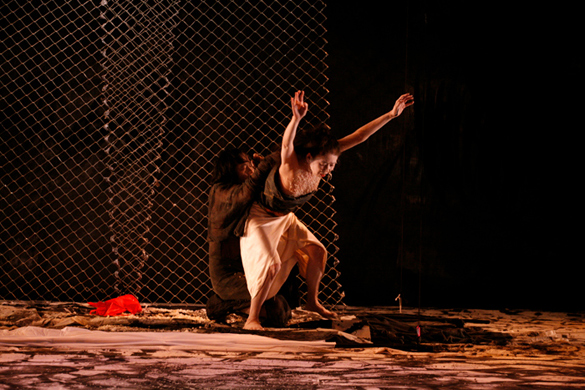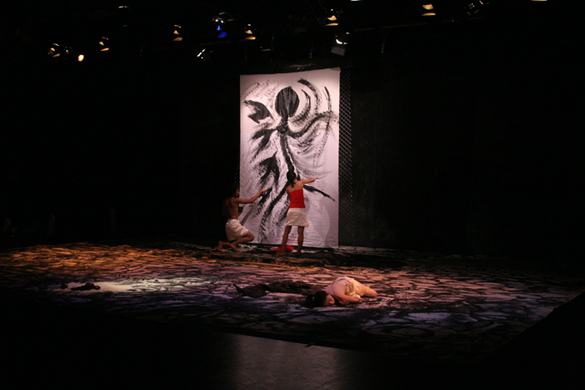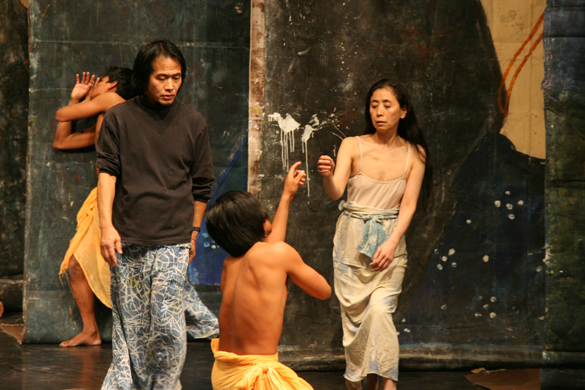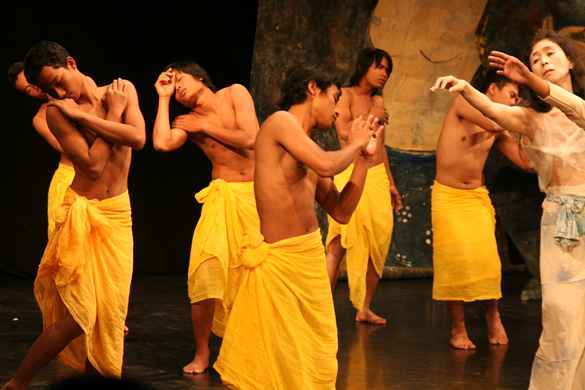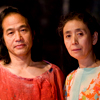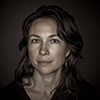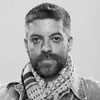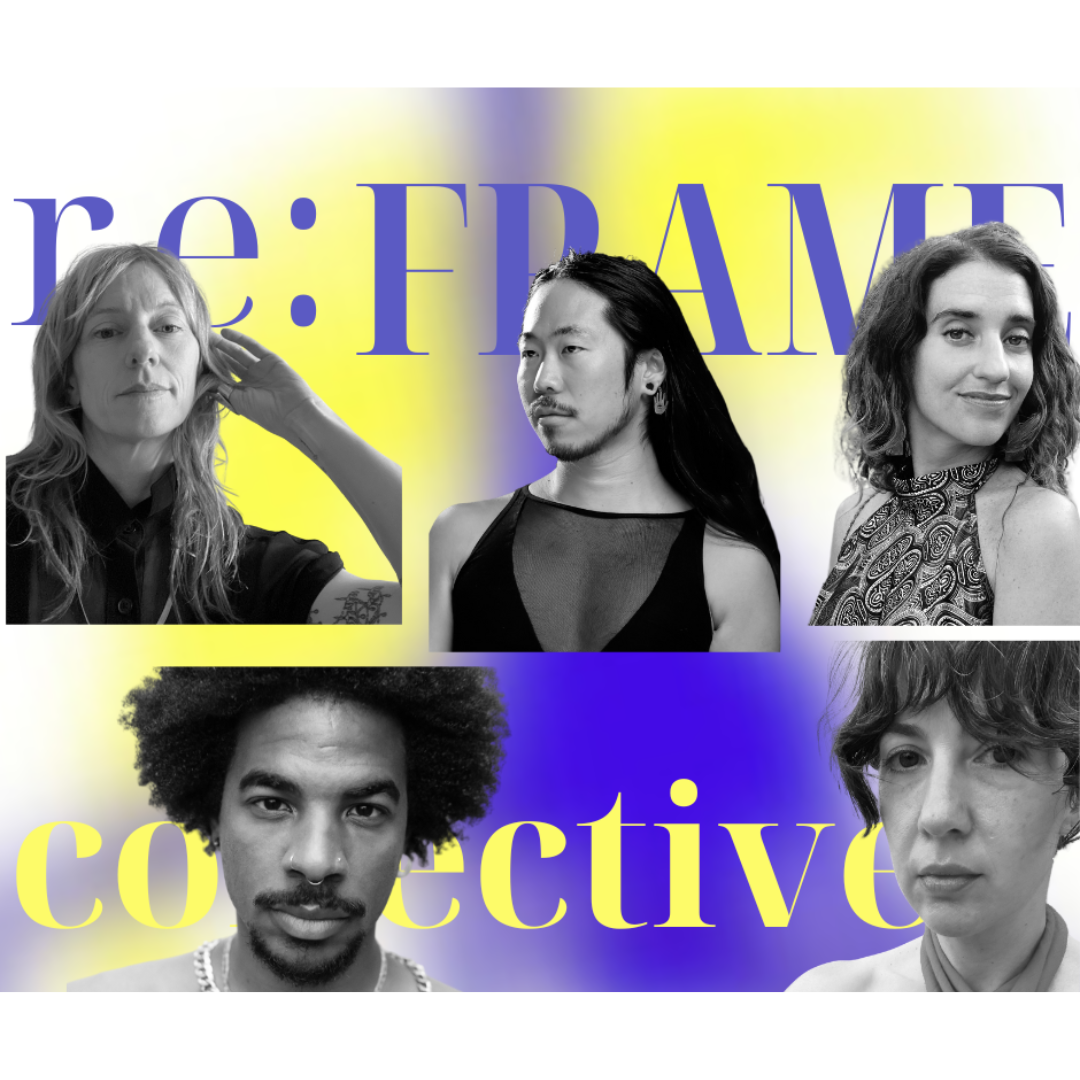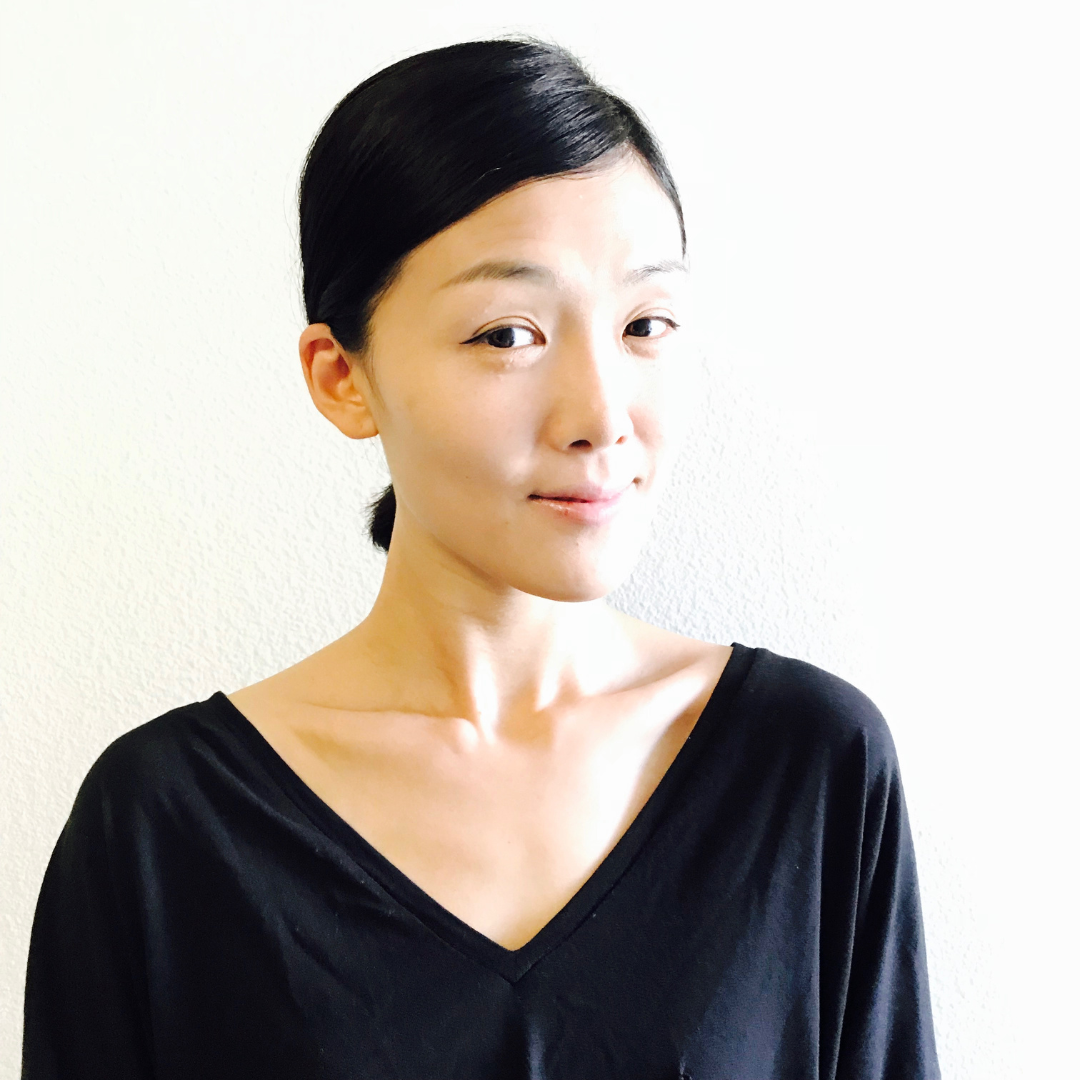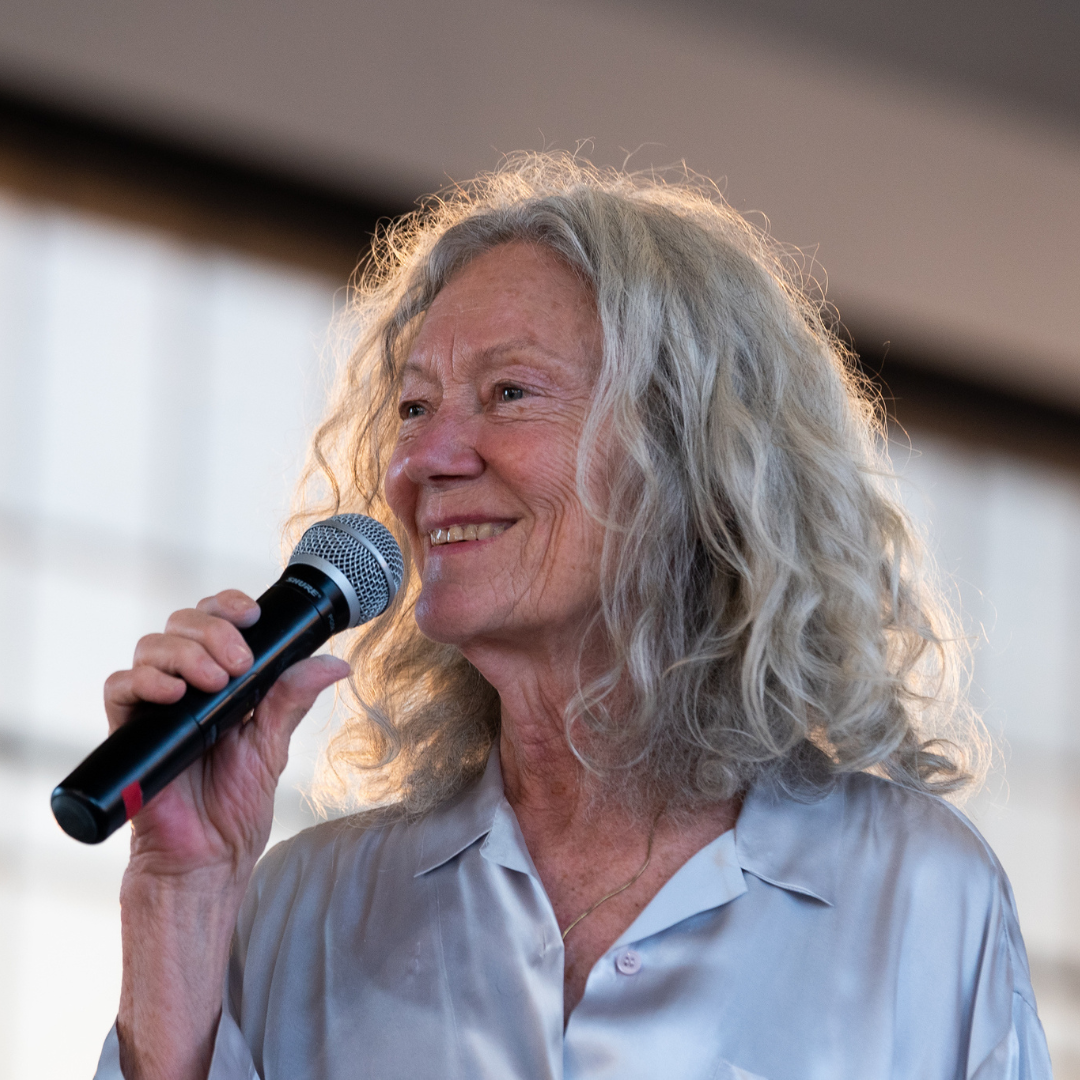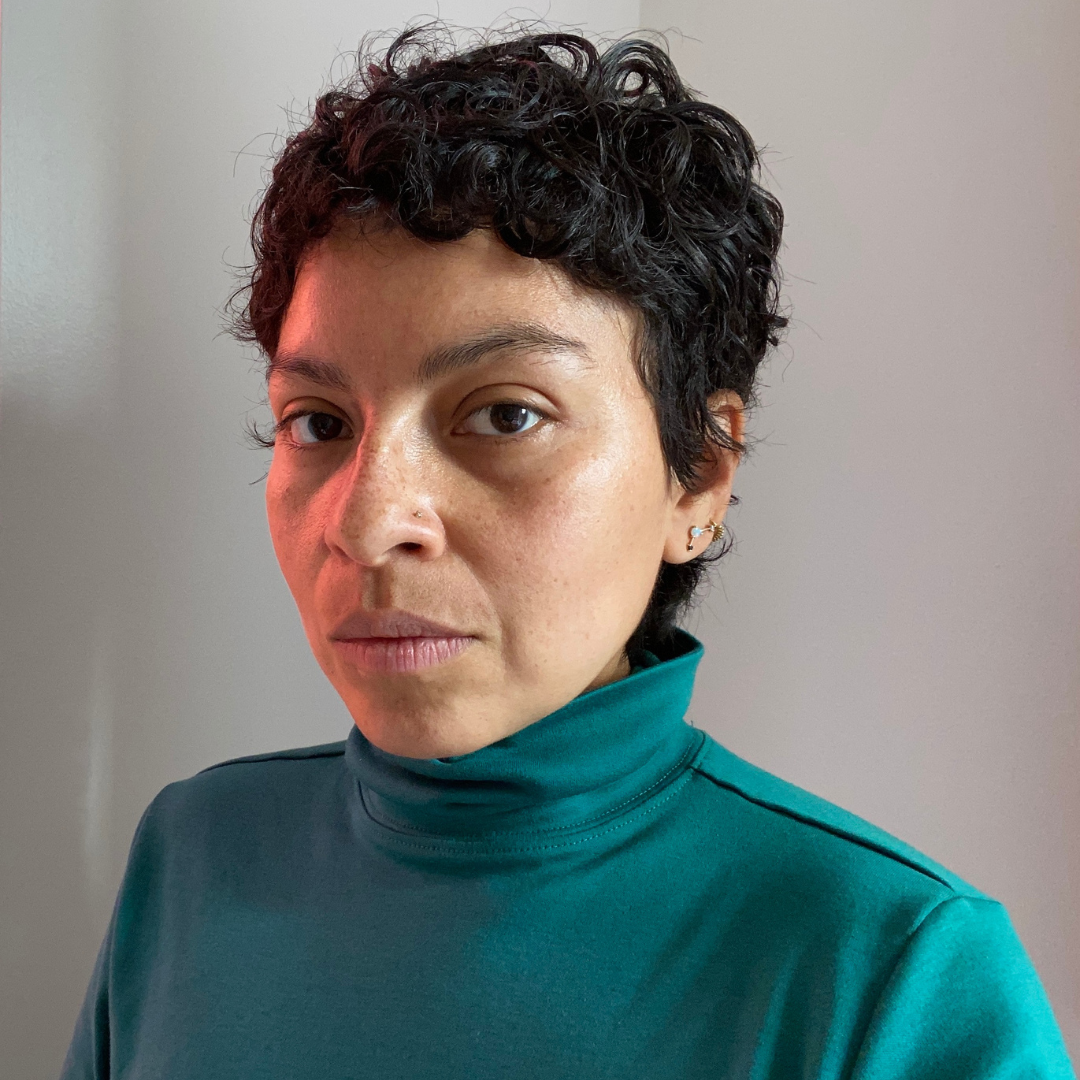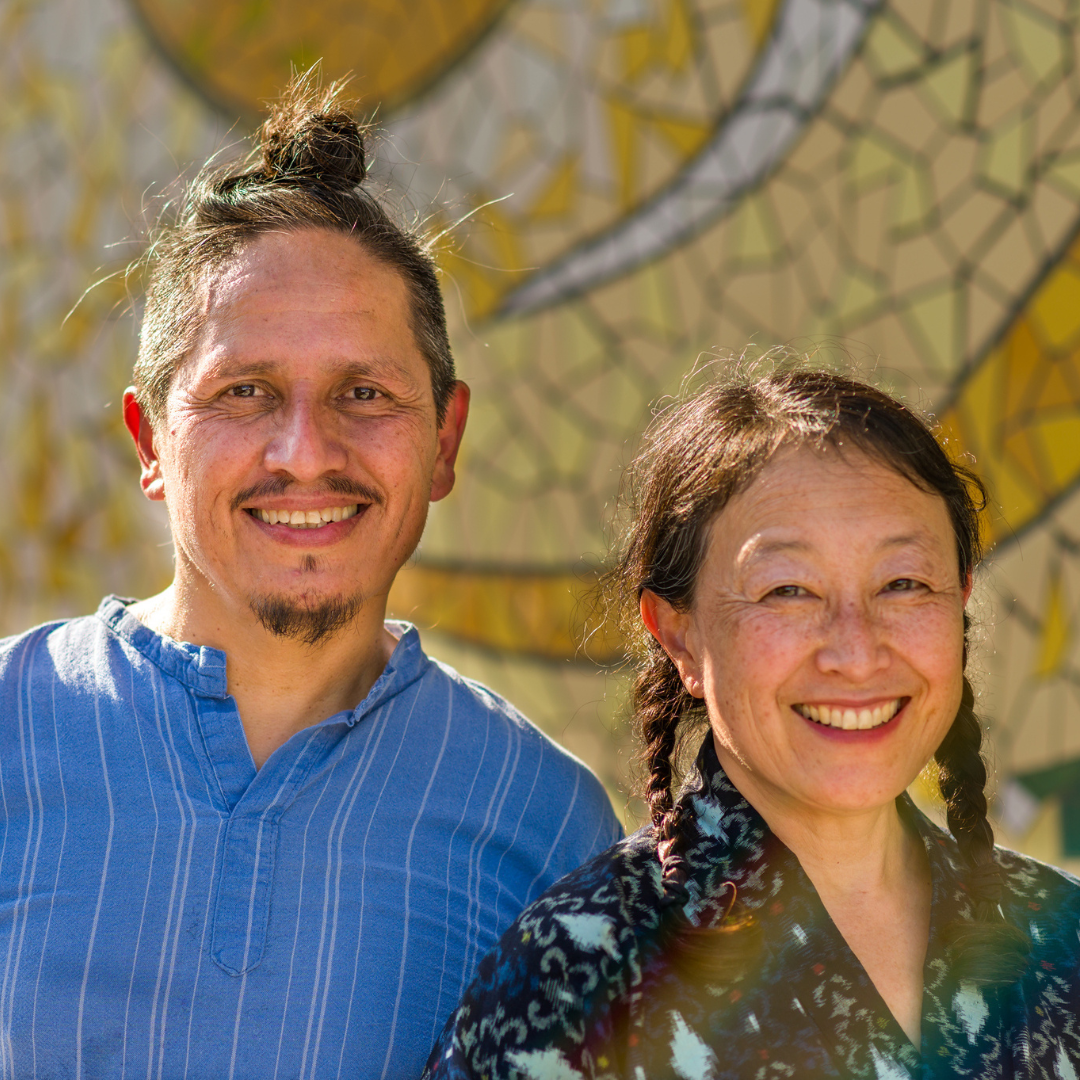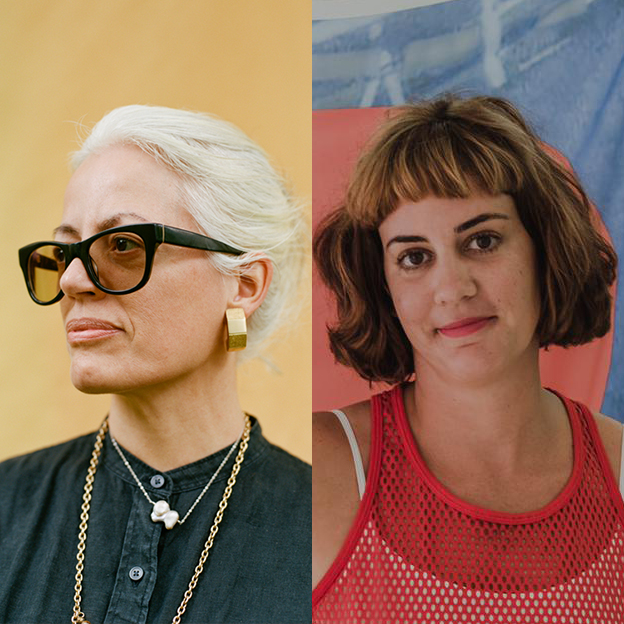Eiko (female) and Koma (male) were law
and political science students in Japan when, in 1971, they each joined the
Tatsumi Hijikata company in Tokyo. Their initially experimental collaboration
soon developed into an exclusive partnership. The following year, Eiko and Koma
started working as independent artists in Tokyo. At the same time, they began
to study with Kazuo Ohno, who along with Hijikata was the central figure in the
Japanese avant-garde theatrical movement of the 1960s. Neither Eiko nor Koma have
studied traditional Japanese dance or theater forms; they have preferred to
choreograph and perform only their own works.
Their interest
in Neue Tanz, the German modern dance movement which flourished alongside the
Bauhaus movement in art and architecture, and their desire to explore nonverbal
theater took them to Hanover, Germany in 1972. There they studied with Manja
Chmiel, a disciple of Mary Wigman, the noted pioneer of Expressionism in dance.
In 1973, they moved to Amsterdam and for the next two years toured extensively
in Germany, the Netherlands, Switzerland and Tunisia.
It was the late
Lucas Hoving, a wonderful dancer who had toured with the early José Limón Dance
Company, who suggested that they go to America. Their first American
performance, White Dance,
was sponsored by the Japan Society in May of 1976. Since then, they have
presented their works at theaters, universities, museums, galleries and
festivals world-wide, including numerous appearances at the American Dance
Festival, five seasons at BAM's Next Wave Festival and a month-long
"living" gallery installation at the Whitney Museum of American Art.
They have also
worked in dance/video as another means of communication with their audiences.
Their video work has been presented on "Alive from Off Center" (1989)
and at the Dance on Camera Festival at Lincoln Center (2001). Their videotapes
are available through Pentacle (E-mail info@eikoandkoma.org).
Eiko and Koma
are known for presenting outdoor works – River
(1995),
The Caravan Project (1999),
Offering
(2002),
Tree Song
(2004) and
Cambodian Stories Revisited (2007)-- as free events in public sites.
By performing at dozens of sites for over 30,000 audience members, Eiko and Koma have shared their work with a more diverse public than is usually
attainable in theaters. They wish to present their dance as a part of the
landscape, an offering and a process rather than a product.
Though Eiko and Koma usually create their own movement, set, costumes and music/sound, they
have also collaborated with a wonderful array of artists. Among them are Native
American musician Robert Mirabal and painter Sandra Lerner (Land,
1991) singers Chanticleer (
Wind, 1993),
composer Somei Sato and Kronos Quartet (River,
1997), a Praise Choir and Joseph Jennings (When Nights Were Dark, 2000), dancer
Anna Halprin and cellist Joan Jeanrenaud (
Be With,
2001), clarinetist David Krakauer (Offering, 2002-03) and lighting designer David
Ferri. Since 2004 Eiko and Koma have worked with the students and graduates
of the Reyum Art School in Phnom Penh, Cambodia. In Cambodian Stories: An
Offering of Painting and Dance, Eiko and Koma collaborated with nine young
Cambodian painters-turned-performers. The work toured to eleven cities in the
United States in the spring of 2006. In the summer of 2007 Charian and Peace,
who played the key roles in Cambodian Stories, joined Eiko and Koma again to
collaborate in presenting Cambodian Stories Revisited, in restaging of Eiko and Koma’s 1983
Grain
and in creating a new piece Quartet.
The latter two were commissioned by and premiered at the 2007 American Dance
Festival. Eiko and Koma’s
Mourning
was a collaboration with noted avant-garde pianist Margaret Leng Tan and was
commissioned for the 100th year anniversary of Japan Society. Eiko and Koma worked again with Peace and Charian in 2008-2009 on
Hunger,
a Joyce Theater Twenty-fifth Anniversary Commission and Walker Art Center
co-commission.
Eiko and Koma
embarked, with major support from the Mellon Foundation, on a multi-faceted,
multi-year Retrospective Project. The Retrospective was publicly inaugurated with an
installation created for the Zhilka Gallery at Wesleyan University in
Connecticut in November 2009. The centerpiece of the Retrospective is
Raven,
a collaboration with composer Robert Mirabal premiered at Danspace.
Raven,
and the larger
Retrospective Project will tour widely across American over the next two years.
Eiko and Koma
were named John Simon Guggenheim Memorial Foundation Fellows for 1984. They
were awarded one of the first "Bessies" (the New York Dance and
Performance Awards) in 1984 for Grain
and
Night Tide,
and were honored again in 1990 for
Passage.
They were named MacArthur Fellows in June of 1996. This was the first time in
the program’s history that the foundation awarded a so-called
"genius" fellowship to be shared by collaborators. In 2004, they
received the Samuel H. Scripps American Dance Festival Award for “lifetime
contributions to the field of modern dance.” They received the 2006 Dance
Magazine Award and were awarded one of the first fifty United States Artists
fellowships. In 2007 and again in 2009, Eiko and Koma were awarded an ALASKA
AIR Fellowship administrated by United States Artists with support from the
Rasmuson Foundation.
Eiko and Koma have been permanent residents of
the United States since 1976. They currently live in New York City, where they
perform regularly and offer occasional Delicious Movement Workshops. Eiko and Koma are currently working on constructing a retrospective of their work. This
project will include new commissions of a living installation and a stage work,
reworking of older pieces, outdoor performances, photo exhibitions, video
installations, showings of their media dances and documentaries, the
publication of a retrospective catalog, workshops and other educational
activities such as panel discussions and lectures.
